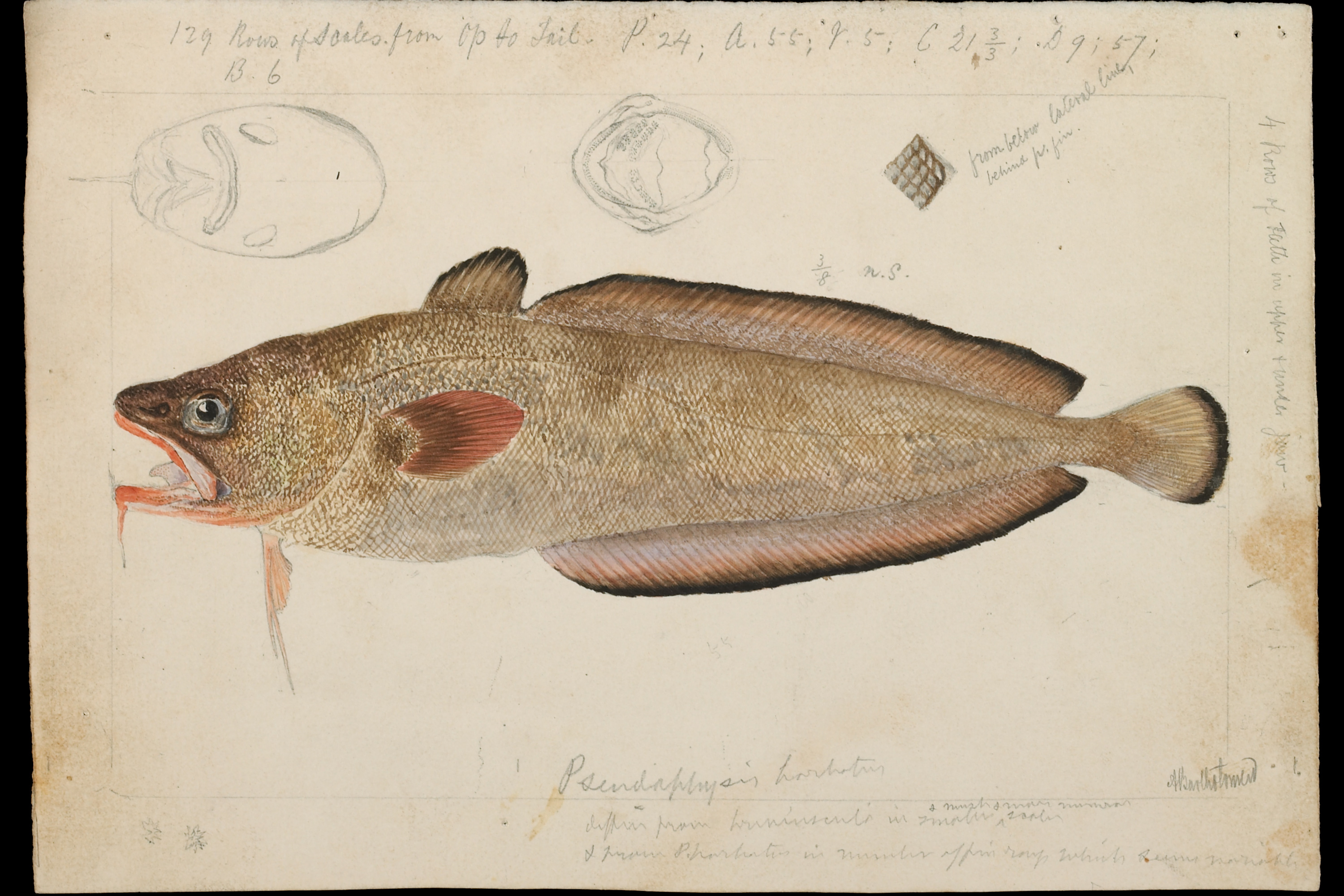Bearded Rock Cod, Pseudophycis barbata
Plate 20. The Australian Rock Cod, Pseudophysis barbatus (now known as Bearded Rock Cod, Pseudophysis barbatus), found in Port Phillip Bay
This fish, not being figured before, may "point a moral and adorn a tale" apropos of the utility of having our colonial fishes accurately figured and described for reference. I was called upon soon after arriving in the colony to assist at a grand dinner in the old Criterion Hotel of "merchants, bankers, and others," who had been brought to gather to taste this fish, to satisfy themselves it was a real Newfoundland cod, a bank of which had been discovered in Victorian waters by fishermen-practical men-who proposed to give the assembled gentlemen and their friends the opportunity of subscribing so many thousands for a fleet of boats, so many thousands for curing establishments on land, so much to the discoverers, &c., and to form a cod fishing company. The small size of the cooked fish and its inferior flavour was explained by the discoverers having been so ill provided that they could only catch a few very young ones. The statistics of the Newfoundland cod fisheries were quoted to show the great profit which would arise from this investment, and all went well, until one of the guests, who shall be nameless, earned great unpopularity by giving some reasons for believing that the samples 16 and 17 inches long, were not young, but adult; and referring to the title of Sam Slick's new book at the time, "How many Fins has a Cod?" showed that , as the real cod had three dorsal fins and two anal ones, and that the Victorian fish in question had only two dorsal and one anal, they could not have been even of the same genus, and that no arguments based on the identity with the true cod could be relied upon for the commercial speculation. The project collapsed; and although none of the capitalists willing to invest in the matter then knew "how many fins had a cod," the figure now given will settle the identity of our fish for the future.
This species seems to vary more than usual in the number of the fin rays, some of our specimens having more and some having less than in Dr. Günther's type. The very much smaller and more numerous scales readily distinguish it from the New Zealand Pseudophysis breviusculus.
The abdomen between the throat and the anal fin is very prominent, owing to the unusually large size of the liver.
Caught commonly with a line all the colder months of the year in Port Philip Bay on rocky reefs in five or six fathoms of water. It is sold in the markets commonly for the table, but the flesh is soft and not very good. The fisherman report the spawning time to be in April.
